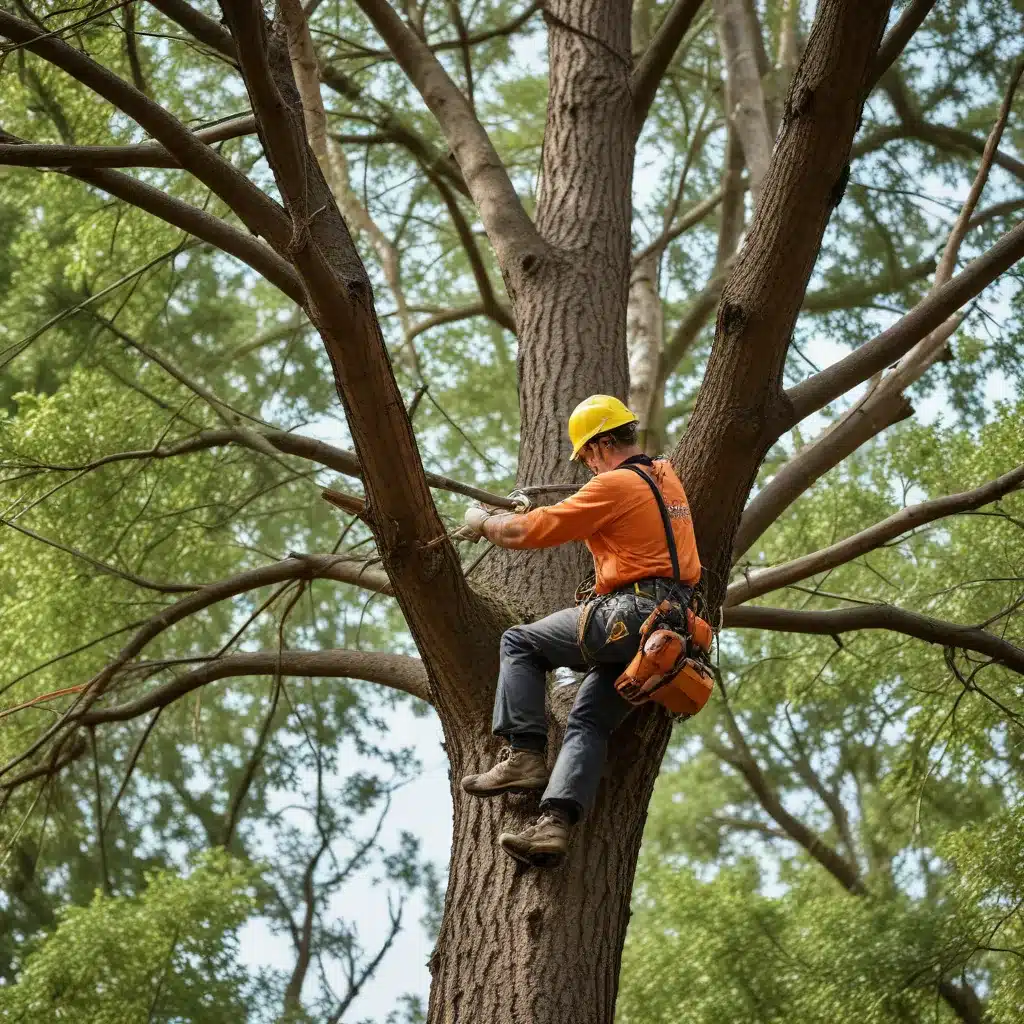
Preparing for Emergency Tree Removal: Protocols and Procedures
In the unpredictable realm of natural disasters, rapid and decisive action is paramount when confronting the perils posed by hazardous trees. As a leading authority in the field of arboriculture, TriCounty Tree Care is uniquely positioned to guide property owners and municipalities through the intricate protocols and procedures involved in emergency tree removal. By understanding the key triggers, assessment criteria, and response strategies, individuals and communities can enhance their resilience and minimize the potential for catastrophic damage.
Triggers for Emergency Tree Removal
The need for immediate tree removal often arises in the wake of severe weather events, such as hurricanes, tornadoes, or ice storms. In these scenarios, trees may become structurally compromised, posing a significant threat to public safety and critical infrastructure. Additionally, trees weakened by disease, pests, or other environmental factors can suddenly become unstable, necessitating prompt intervention to prevent potential hazards.
Assessing Tree Hazards
Accurately identifying the level of risk associated with a compromised tree is a crucial first step in the emergency removal process. Certified arborists employ a comprehensive visual inspection, evaluating factors such as structural integrity, root system health, and the presence of decay or other defects. In some cases, advanced diagnostic tools, such as resistance drilling or sonic tomography, may be employed to provide a more detailed assessment of the tree’s condition.
The Emergency Response Process
When a tree poses an immediate threat, time is of the essence. The emergency response process typically involves the following steps:
- Immediate notification to local authorities and utility companies to ensure the safety of the surrounding area.
- Rapid deployment of a specialized tree removal crew, equipped with the necessary tools and equipment to safely address the hazard.
- Careful assessment of the tree’s condition and potential impact, guiding the selection of the most appropriate removal technique.
- Meticulous execution of the removal process, prioritizing the protection of nearby structures, infrastructure, and vegetation.
- Proper disposal of the tree debris, in compliance with local regulations and environmental best practices.
Protocols for Emergency Tree Removal
Ensuring the safety of both the public and the tree removal crew is the primary concern when responding to an emergency situation. Adherence to strict protocols is essential to mitigate the inherent risks involved in this specialized field of work.
Safety Considerations
The safety of the public and the tree removal crew is the top priority during emergency tree removal operations. Protocols include establishing secure perimeters, providing appropriate personal protective equipment (PPE) for workers, and implementing robust communication systems to coordinate the response.
Regulatory Requirements
Depending on the location and circumstances, emergency tree removal may be subject to various regulatory requirements, such as permits, approvals, or specific disposal guidelines. Navigating these regulations can be a complex undertaking, underscoring the importance of partnering with experienced professionals who are well-versed in the applicable laws and guidelines.
Permitting and Approvals
In some cases, obtaining the necessary permits and approvals from local authorities may be required before initiating emergency tree removal. This process can vary widely depending on the jurisdiction, the scale of the operation, and the potential impact on the surrounding environment.
Procedures for Emergency Tree Removal
The execution of emergency tree removal operations requires a methodical approach, drawing upon specialized techniques and equipment to ensure the safety and efficiency of the process.
Initial Site Assessment
Upon arriving at the scene, the arborist or tree removal crew will conduct a thorough assessment of the situation, evaluating the tree’s condition, the potential hazards, and the surrounding environment. This information is then used to develop a comprehensive plan of action, taking into account the most appropriate removal methods and the necessary safety precautions.
Tree Removal Techniques
The specific techniques employed during emergency tree removal can vary depending on the tree’s size, location, and level of instability. Common methods include controlled felling, sectional removal, and the use of aerial lift equipment or cranes to carefully dismantle the tree in a safe and controlled manner.
Waste Disposal and Cleanup
Following the successful removal of the tree, the debris must be properly disposed of in accordance with local regulations. This may involve chipping, hauling, or other approved methods of waste management. Additionally, the site must be thoroughly cleaned and any potential environmental impacts, such as soil disturbance or damage to nearby vegetation, must be addressed.
Post-Removal Considerations
The responsibilities of the tree care specialist do not end with the successful completion of the emergency removal. Several critical factors must be considered to ensure the long-term well-being of the site and the surrounding ecosystem.
Replanting and Restoration
In many cases, the removal of a tree can leave a significant gap in the landscape, both aesthetically and ecologically. Developing a comprehensive replanting and restoration plan, in consultation with landscape architects or horticulturists, can help to mitigate these impacts and promote the long-term recovery of the affected area.
Insurance and Liability
Emergency tree removal operations can carry significant financial and legal implications, particularly in cases where property damage or personal injury has occurred. Maintaining appropriate insurance coverage and carefully documenting the incident can help to protect the tree care provider and the affected parties.
Maintenance and Monitoring
Following the emergency removal, the site should be closely monitored for any signs of further instability or potential hazards. Ongoing maintenance, such as stump grinding or the treatment of exposed root systems, may be necessary to ensure the continued safety and integrity of the area.
By adhering to these comprehensive protocols and procedures, TriCounty Tree Care is committed to providing the highest level of arboricultural expertise and ensuring the safety and well-being of the communities we serve, even in the face of the most daunting emergency situations.


